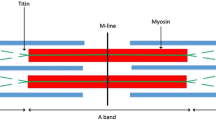Abstract
Motor-evoked potentials (MEPs) vary in size from one stimulus to the next. The objective of this study was to determine the cause and source of trial-to-trial MEP size variability. In two experiments involving 10 and 14 subjects, the variability of MEPs to cortical stimulation (cortical-MEPs) in abductor digiti minimi (ADM) and abductor hallucis (AH) was compared to those responses obtained using the triple stimulation technique (cortical-TST). The TST eliminates the effects of motor neuron (MN) response desynchronization and of repetitive MN discharges. Submaximal stimuli were used in both techniques. In six subjects, cortical-MEP variability was compared to that of brainstem-MEP and brainstem-TST. Variability was greater for MEPs than that for TST responses, by approximately one-third. The variability was the same for cortical- and brainstem-MEPs and was similar in ADM and AH. Variability concerned at least 10–15% of the MN pool innervating the target muscle. With the stimulation parameters used, repetitive MN discharges did not influence variability. For submaximal stimuli, approximately two-third of the observed MEP size variability is caused by the variable number of recruited alpha-MNs and approximately one-third by changing synchronization of MN discharges. The source of variability is most likely localized at the spinal segmental level.


Similar content being viewed by others
References
Arányi Z, Mathis J, Hess CW, Rösler KM (1998) Task-dependent facilitation of motor evoked potentials during dynamic and steady muscle contractions. Muscle Nerve 21:1309–1316
Berardelli A, Inghilleri M, Rothwell JC, Cruccu G, Manfredi M (1991) Multiple firing of motoneurones is produced by cortical stimulation but not by direct activation of descending motor tracts. Electroencephalogr Clin Neurophysiol 81:240–242
Bühler R, Magistris MR, Truffert A, Hess CW, Rösler KM (2001) The triple stimulation technique to study central motor conduction to the lower limbs. Clin Neurophysiol 112:938–949
Burke D, Hicks R, Stephen J, Woodforth I, Crawford M (1995) Trial-to-trial variability of corticospinal volleys in human subjects. Electroencephalogr Clin Neurophysiol 97:231–237
Day BL, Dressler D, Maertens de Noordhout A, Marsden CD, Nakashima K, Rothwell JC, Thompson PD (1989) Electric and magnetic stimulation of human motor cortex: surface EMG and single motor unit responses. J Physiol (Lond) 412:449–473
Day BL, Rothwell JC, Thompson PD, Dick JPR, Cowan JMA, Berardelli A, Marsden CD (1987) Motor cortex stimulation in intact man. (2) Multiple descending volleys. Brain 110:1191–1209
Ellaway PH, Davey NJ, Maskill DW, Rawlinson SR, Lewis HS, Anissimova NP (1998) Variability in the amplitude of skeletal muscle responses to magnetic stimulation of the motor cortex in man. Electroencephalogr Clin Neurophysiol 109:104–113
Gugino LD, Romero JR, Aglio L, Titone D, Ramirez M, Pascual-Leone A, Grimson E, Weisenfeld N, Kikinis R, Shenton ME (2001) Transcranial magnetic stimulation coregistered with MRI: a comparison of a guided versus blind stimulation technique and its effect on evoked compound muscle action potentials. Clin Neurophysiol 112:1781–1792
Hess CW, Mills KR, Murray NMF (1986) Magnetic stimulation of the human brain: facilitation of motor responses by voluntary contraction of ipsilateral and contralateral muscles with additional observations on an amputee. Neurosci Lett 71:235–240
Humm AM, Z’Graggen WJ, von Hornstein NE, Magistris MR, Rösler KM (2004) Assessment of central motor conduction to intrinsic hand muscles using the triple stimulation technique: normal values and repeatability. Clin Neurophysiol 115:2558–2566
Jankus WR, Robinson LR, Little JW (1994) Normal limits of side-to-side H-reflex amplitude variability. Arch Phys Med Rehabil 75:3–7
Kiers L, Cros D, Chiappa KH, Fang J (1993) Variability of motor potentials evoked by transcranial magnetic stimulation. Electroencephalogr Clin Neurophysiol 89:415–423
Kischka U, Fajfr R, Fellenberg T, Hess CW (1993) Facilitation of motor evoked potentials from magnetic brain stimulation in man: a comparative study of different target muscles. J Clin Neurophysiol 10:505–512
Magistris MR, Rösler KM, Truffert A, Landis T, Hess CW (1999) A clinical study of motor evoked potentials using a triple stimulation technique. Brain 122:265–279
Magistris MR, Rösler KM, Truffert A, Myers JP (1998) Transcranial stimulation excites virtually all motor neurones supplying the target muscle. A demonstration and a method improving the study of motor evoked potentials. Brain 121:437–450
Naka D, Mills KR (2000) Further evidence for corticomotor hyperexcitability in amyotrophic lateral sclerosis. Muscle Nerve 23:1044–1150
Patton HD, Amassian VE (1954) Single- and multiple-unit analysis of cortical stage of pyramidal tract activation. J Neurophysiol 17:345–363
Rösler KM, Etter C, Truffert A, Hess CW, Magistris MR (1999) Rapid cortical motor output map changes assessed by the triple stimulation technique. NeuroReport 10:579–583
Rösler KM, Truffert A, Hess CW, Magistris MR (2000) Quantification of upper motor neuron loss in amyotrophic lateral sclerosis. Clin Neurophysiol 111:2208–2218
Rossini PM, Desiato MT, Lavaroni F, Caramia MD (1991) Brain excitability and electroencephalographic activation: non-invasive evaluation in healthy humans via transcranial magnetic stimulation. Brain Res 567:111–119
Rothwell JC, Hallett M, Berardelli A, Eisen A, Rossini P, Paulus W (1999) Magnetic stimulation: motor evoked potentials. Electroencephalogr Clin Neurophysiol (Suppl) 52:97–103
Schieppati M, Romano C, Gritti I (1990) Convergence of Ia fibres from synergistic and antagonistic muscles onto interneurones inhibitory to soleus in humans. J Physiol 431:365–377
Ugawa Y, Uesaka Y, Terao Y, Hanajima R, Kanazawa I (1994) Magnetic stimulation of corticospinal pathways at the foramen magnum level in humans. Ann Neurol 36:618–624
Woodforth IJ, Hicks RG, Crawford MR, Stephen JP, Burke DJ (1996) Variability of motor-evoked potentials recorded during nitrous oxide anesthesia from the tibialis anterior muscle after transcranial electrical stimulation. Anesth Analg 82:744–749
Yap CB, Hirota T (1967) Sciatic nerve motor conduction velocity study. J Neurol Neurosurg Psychiatry 30:233–239
Z’Graggen WJ, Humm AM, Durisch N, Magistris MR, Rösler KM (2005) Repetitive spinal motor neuron discharges following single transcranial magnetic stimuli: a quantitative study. Clin Neurophysiol 116:1628–1637
Acknowledgment
This study was supported by a research grant of the Swiss National Science foundation to KMR and MRM (Grant 3200B0-100701).
Author information
Authors and Affiliations
Corresponding author
Rights and permissions
About this article
Cite this article
Rösler, K.M., Roth, D.M. & Magistris, M.R. Trial-to-trial size variability of motor-evoked potentials. A study using the triple stimulation technique. Exp Brain Res 187, 51–59 (2008). https://doi.org/10.1007/s00221-008-1278-z
Received:
Accepted:
Published:
Issue Date:
DOI: https://doi.org/10.1007/s00221-008-1278-z




